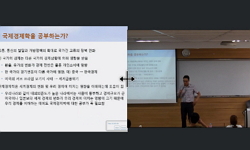이 연구는 2000년대 이후 등장한 위성 방송, DMB, IPTV, 종합 편성 채널 등 신규매체 및 채널 도입 과정을 경쟁 정책적 관점에서 통시적으로 분석·평가하고 향후 경쟁 정책에 대한 함의를 도출하...
http://chineseinput.net/에서 pinyin(병음)방식으로 중국어를 변환할 수 있습니다.
변환된 중국어를 복사하여 사용하시면 됩니다.
- 中文 을 입력하시려면 zhongwen을 입력하시고 space를누르시면됩니다.
- 北京 을 입력하시려면 beijing을 입력하시고 space를 누르시면 됩니다.

2000년대 이후 한국 방송 산업의 신규 매체 및 채널 도입 정책에 관한 통시적 접근 = A Diachronic Study of the Competition Policy of the Korean Broadcasting Industry Since the 2000s
한글로보기https://www.riss.kr/link?id=A103318369
- 저자
- 발행기관
- 학술지명
- 권호사항
-
발행연도
2017
-
작성언어
Korean
-
주제어
경쟁 정책 ; 위성 방송 ; DMB ; IPTV ; 종합 편성 채널 ; competition policy ; satellite broadcasting ; DMB ; IPTV ; general programming channels
-
등재정보
KCI등재
-
자료형태
학술저널
-
수록면
173-219(47쪽)
- DOI식별코드
- 제공처
-
0
상세조회 -
0
다운로드
부가정보
국문 초록 (Abstract)
이 연구는 2000년대 이후 등장한 위성 방송, DMB, IPTV, 종합 편성 채널 등 신규매체 및 채널 도입 과정을 경쟁 정책적 관점에서 통시적으로 분석·평가하고 향후 경쟁 정책에 대한 함의를 도출하는 것을 목적으로 한다. 이를 위해 정책 의제설정, 정책 결정, 정책 집행, 정책 평가로 구성되는 정책 과정을 기본 틀로 하여 신규 매체 도입에 있어 각 정책 단계가 갖는 경쟁 정책적 의미를 고찰했다. 연구결과 나타난 신규 매체 도입 과정의 경쟁 정책 차원의 특성은 다음과 같다. 첫째, 공정 경쟁 관점에서의 거시적이고 장기적 정책 수립이 부재한 대신 단기적이고 정치적인 규제 대응이 주를 이뤘다. 둘째, 핵심적 정책 사안에 대한 경쟁 관점의 판단 및 규제 체계 정립에 실패했다. 셋째, 경쟁 정책 수립 실패가 규제 기관의 후견주의적 정책 결정이나 관할권 다툼, 조정 능력 부재 등과 맞물리면서 특정 사업자에 과도하게 편향되는 정책 결정을 낳았다. 변화하는 미디어 환경에서 더욱 부각되고 있는 공정 경쟁 정책 수립을 위해서는 구체적인 시장 구조 변화에 대한 분석, 신규 진입 사업자의 시장 안착이나 기존 사업자의 보호를 넘어서는 경쟁 원칙 수립, 장기적이고 거시적인 정책 평가 등을 수행하고 이에 기반하여 경쟁 정책의 틀을 새롭게 정립해야 할 필요성이 제기된다.
다국어 초록 (Multilingual Abstract)
The purpose of this study, based on a competitive policy perspective, is to analyzes and evaluates the introduction process of new media and channels such as satellite broadcasting, DMB, IPTV, general programming channels since 2000, as well as to der...
The purpose of this study, based on a competitive policy perspective, is to analyzes and evaluates the introduction process of new media and channels such as satellite broadcasting, DMB, IPTV, general programming channels since 2000, as well as to derive implications for future competition policies. To do this, we analyzed the each policy stage in the introduction of new media based on the policy process consisting of policy agenda setting, policy decision and enforcement, policy evaluation. The characteristics of the competitive policy of the new media introduction process are as follows. First, instead of macro and long‐term policy formulation in terms of fair competition, short‐term and political regulatory responses were dominant. Second, it has failed to judge the decision on core policy issues and establish a regulatory system from a competitive viewpoint. Third, the failure to establish a competitive policy has resulted in policy decisions that are overly biased to specific operators, in combination with the regulatory body’s parental policy decision, competition between regulatory jurisdictions over jurisdiction, and lack of coordination. In order to establish fair competitive policies that are becoming more important in the changing media environment, competition policy framework should be newly established based on analysis of changes in market structure, establishment of competition principles beyond the successful entry of new entrants or the protection of existing ones, and long‐term and macroscopic policy evaluation.
목차 (Table of Contents)
- 1. 문제제기
- 2. 이론적 논의
- 3. 위성 방송 도입과 경쟁 정책의 부상
- 4. 이동 멀티미디어 방송(DMB)의 도입과 이동형 경쟁 시장 형성
- 5. IPTV 도입과 방송 통신 융합 대응
- 1. 문제제기
- 2. 이론적 논의
- 3. 위성 방송 도입과 경쟁 정책의 부상
- 4. 이동 멀티미디어 방송(DMB)의 도입과 이동형 경쟁 시장 형성
- 5. IPTV 도입과 방송 통신 융합 대응
- 6. 종합 편성 채널 도입과 채널 경쟁의 심화
- 7. 결론 및 논의
- 참고문헌
- Abstract
동일학술지(권/호) 다른 논문
-
한국 문화예술 지원 정책의 팔길이 원칙 이념과 실현의 문제
- 서울대학교 언론정보연구소
- 정인숙(In Sook Jung)
- 2017
- KCI등재
-
- 서울대학교 언론정보연구소
- 조항제(Hang-Je Cho)
- 2017
- KCI등재
-
Will Mobile Phones Replace Personal Computers? An Empirical Analysis of 2-Screen Panel Data
- 서울대학교 언론정보연구소
- Su Jung Kim(김수정)
- 2017
- KCI등재
-
- 서울대학교 언론정보연구소
- 주연경(Yeon Kyoung Joo)
- 2017
- KCI등재




 KCI
KCI DBpia
DBpia





